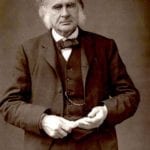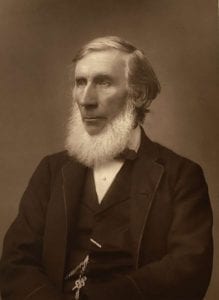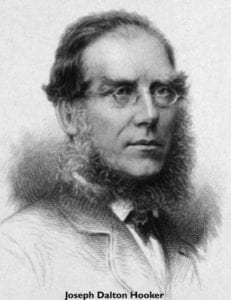JMS Pearce
Hull, England, United Kingdom

Charles Babbage, who conceived the first automatic digital computer, published in 1830 Reflections on the Decline of Science in England. This stimulated the formation of several new groups that aimed to further scientific progress and exchange of ideas. These were distinct from Britain’s nineteenth century gentlemen’s social clubs and were devoted to scholarship and invention. An early group was the Lunar Society, founded in the 1750s by Erasmus Darwin1 as a gathering of fourteen brilliant scientists, writers, and industrialists. Its self-styled “Lunaticks”a included: Matthew Boulton, James Watt, Joseph Priestley, Jonathan Stokes, and William Withering. Collectively, they not only debated and increased scientific knowledge, but they built canals, public buildings, factories, and founded famous businesses.2 Their influence in scientific discovery and the industrial revolution was immense. However, it fizzled out in 1794.
The Royal Society was founded in 1660; The Linnean Society, a forum for natural history and taxonomy, in 1788; the Royal Institution, a center of scientific research and the popularization of science, in 1799;3 and the British Association For Advancement Of Science (now The British Science Association) in 1831.
The X Club
Less well known is The X Club, which paved the way for other clubs and societies. It was created by a small group of brilliant, often eccentric people, who enjoyed informal, candid discussions, friendly banter, and debate. It concerned itself with many new scientific ventures and prospects of academic progress, particularly reform of the Royal Society.
It began on 3 November 1864 at St. George’s Hotel on Albemarle Street in London, when eight friends led by Thomas Huxley, all (but Spencer) Fellows of the Royal Society, formed the X Club. Huxley observed that the club “never had any purpose except the purely personal object of bringing together a few friends who did not wan to drift apart . . .” A ninth member, William Spottiswoode, a mathematician, physicist, and partner in the publishing firm Eyre & Spottiswoode, joined a month later. Various titles were considered. Thomas Huxley, a doctor, anthropologist, and comparative anatomist, jokingly proposed that the club be named “Blastodermic Club,” a metaphor for the avian blastoderm—the center of development—as a totem to the development of science. Another proposal, “Thorough Club,” referred to an extant movement for the “freedom to express unorthodox opinion.” The name “X Club” was eventually chosen in May 1865 because “it committed the members to nothing.”
Meetings were held at 6:00 pm to permit members to attend the nearby Royal Society meetings in Burlington House at 8:00 pm on the first Thursday of each month from October till June. They met at St. George’s Hotel, then Almond’s Hotel, Clifford Street, and after 1886 at the Athenaeum Club. Selected guests, men of science or of letters, also attended these dinners. But like the Red Lion Club, genial horseplay and frivolity often accompanied scientific discourse.
X Club members
To preserve an element of secrecy and informality, only sketchy records of the meetings were kept. This distinguished group was active for almost forty years.
- George Busk (1807-1886)
- Joseph Dalton Hooker (1817-1911)
- Herbert Spencer (1820-1903)
- John Tyndall (ca. 1822-1893)
- Thomas Henry Huxley (1825-1895)
- William Spottiswoode (1825-1883)
- Edward Frankland (1825-1899)
- Thomas Archer Hirst (1830-1892)
- John Lubbock (1834-1913)
The X Club 1864-93
These were turbulent times in the development of science and religion. The instigator, Thomas Henry Huxley (Fig 1), was a brilliant doctor, draughtsman, professor of Natural History, palaeontologist, and anthropologist; he was known for his lacerating wit. Herbert Spencer, a polymath philosopher and psychologist, and Darwin’s cousin, John Lubbock, a wealthy banker, archaeologist, and student of evolution joined the group during the heated disputes concerning the 1859 publication of Charles Darwin’s On Origin of Species. Huxley called himself “Darwin’s Bulldog.”

John Tyndall (Fig 2) was an Irish physicist, natural philosopher, and mountaineer, whose highly original work greatly advanced both natural and medical science.4 Edward Frankland discovered organometallic compounds and invented the concept of valency. Thomas Archer Hirst was a physicist and mathematician, specializing in geometry. Thomas Huxley, Joseph Dalton Hooker (botanist, explorer) (Fig 3), and George Busk (naval surgeon, zoologist and palaeontologist), were all medical men and revered naturalists. As friends and professionals they encouraged and helped each other both in research and in professional preferment, e.g. in The Royal Institution.5 They actively promoted Darwinian evolution when it was fiercely rejected by religious authorities, famously in the Thomas Huxley-Bishop Samuel Wilberforce debate in Oxford on 30 June 1860, at a meeting of the British Association for the Advancement of Science.
There were several members of the X Club on the Council of the Royal Society in which Hooker, Spottiswoode, Frankland, Hirst, and Huxley held high office; both Huxley and Spottiswoode became its president.6 Busk served as president of the Royal College of Surgeons.
They quickly became powerful guides in the Royal Society, the British Association for the Advancement of Science, and the Linnean Society. They promoted the founding of the journal Nature, and proposed Darwin for the Copley Medal in 1864. The X Club also furthered science in education and promoted government grants for research.
Far from origins in the landed gentry, their members came from differing social classes but shared interests in science and natural history. Essential to this small club was a resolutely determined academic liberalism: intellectual ideas and explorations free of political or religious intrusion.7
“Its members were engaged in developing and propagating naturalistic accounts of physical and human phenomena. They opposed all suggestions that there were supernatural interventions in the natural order and any attempts to constrain scientific investigations with theologically determined boundaries.”6,p. 56
From the mid-1880s ill health diminished the activity of several members. The club ended in 1893, after depletion by death and old age. The last meeting was held in March 1893. Only Frankland and Hooker attended.8
Legacy

Although the academic attainments and influence of the X Club members cannot be doubted, the authority Ruth Barton decried them as perpetrators of London-based “gentlemanly science,” where salaried scientists were few and “landed gentlemen, lawyer and medical men, and businessmen devoted their considerable spare time to science.”9 Similarly, she says the esteemed societies “wanted to be socially exclusive and had high admission fees”: the Royal Society, Society of Antiquaries, Horticultural Society, Geological Society, and Linnean Society certainly were expensive. This appears a cynical view of a social group of brilliant polymaths, anxious to foster the fruits of science in the public in an unstable but scientifically burgeoning Victorian England.
The Scriblerus Club was another group of literate Tory wits which included: Alexander Pope, Jonathan Swift, John Gay, and Thomas Parnell. There were many such non-scientific societies and private gentlemen’s clubs at this time—icons of the power of old money and privileged connections—who gathered for social intercourse and dining. However, this characterized the Victorian style of privilege. There was undoubtedly an element of power-seeking elitism in such societies, but it is unfortunate that elitism defines a select group that is superior in terms of ability or qualities to the rest of a group or society. Elitism has become a snobbish and pejorative term that conceals its principal purpose, the quest for discovery and high standards.
The prime aim of the X Club was unconstrained academic progress. Several of its scientists came from homes of the “middling classes” where poor living conditions often prevailed and hard work was a necessity. For example, Tyndall and Frankland worked as poorly paid schoolteachers for years but shared reading matter, arguments, and controversial ideas of science and religion. Huxley too had a humble, impecunious start in life and was appalled by poverty and destitution in his early medical practice.
By the turn of the century the X Club had ended and universities took a major role in education and research, which continues today. Meetings expanded in scale and eventually became structured and formalized, very often at the cost of sacrificing the personal intimacy, academic liberalism, and unrestricted candor of smaller closed Victorian clubs and societies.
End notes
- They regularly met on the night of a full moon to illumine their walk home.
References
- The original lunar society. lunarsociety.org.uk/orignal-lunar-men
- Pearce JMS The lunar society legacy. Hektoen Int. Highlighted in Frontispiece Summer 2014 – Volume 6, Issue 3
- The Royal Institution. Historyhttps://www.rigb.org/docs/brief_history_of_ri_2.pdf
- Pearce JMS. John Tyndall, FRS: The beauty of science. Hektoen Int. Winter 2018.
- Barton, R. Huxley, Lubbock, and Half a Dozen Others: Professionals and Gentlemen in the Formation of the X Club, 1851–1864, Isis, Chicago: University of Chicago Press 1998;89 (3): 410–444,
- Barton, R. ‘An Influential Set of Chaps’: The X-Club and Royal Society Politics 1864–85. The British Journal for the History of Science 1990; 23(1), 53-81. doi:10.1017/S0007087400044459
- Jensen, J. The X Club: Fraternity of Victorian Scientists. The British Journal for the History of Science 1970; 5(1), 63-72.
- MacLeod, R M. “The X-Club a Social Network of Science in Late-Victorian England”, Notes and Records of the Royal Society of London, London: Royal Society, 1970;24 (2): 305–319.
- Barton R. The X Club: Power and Authority in Victorian Science. University of Chicago Press 2018. Pp.47-8.
JMS PEARCE, MD, FRCP, is emeritus consultant neurologist in the Department of Neurology at the Hull Royal Infirmary, England.

Leave a Reply